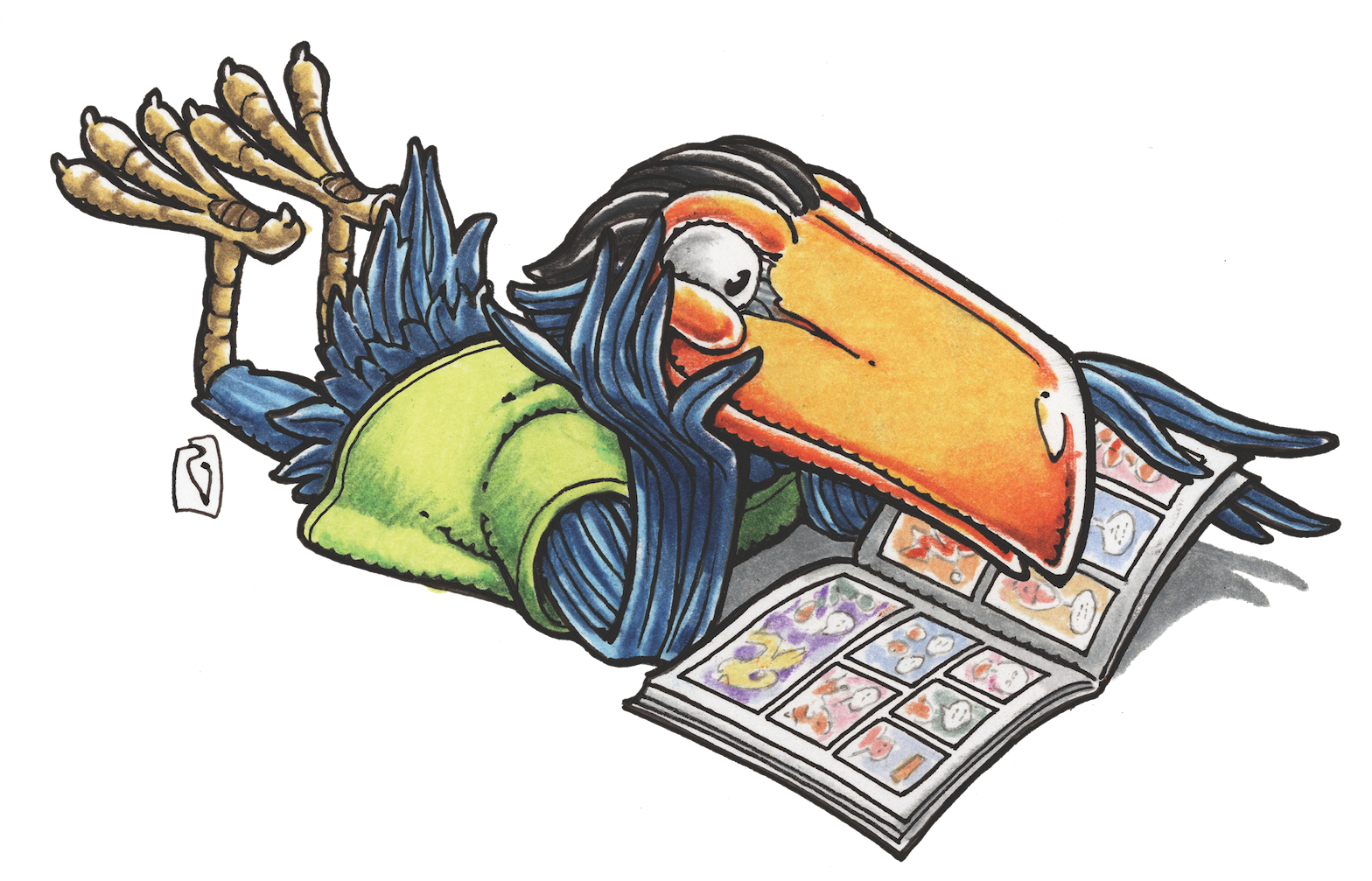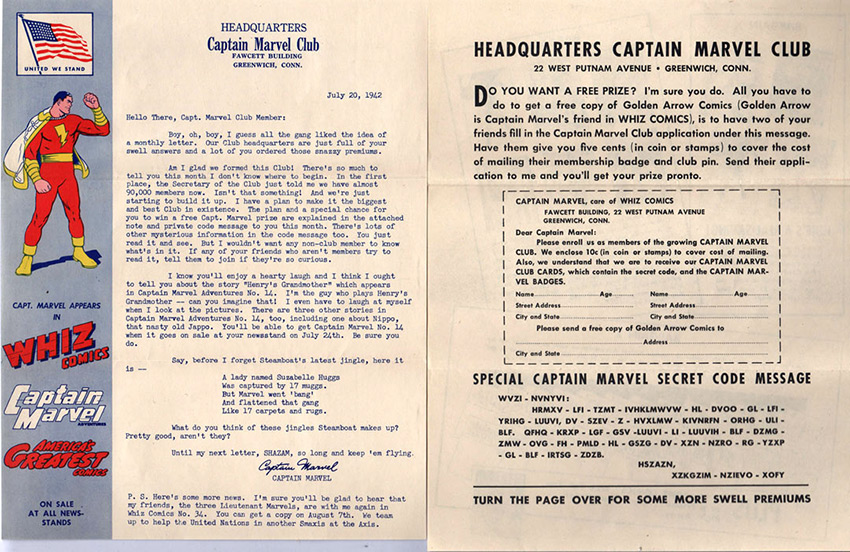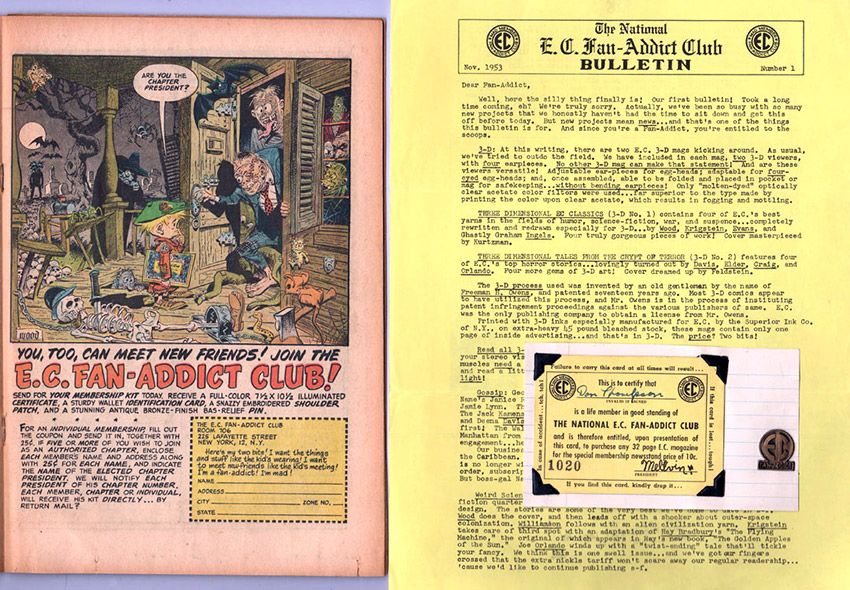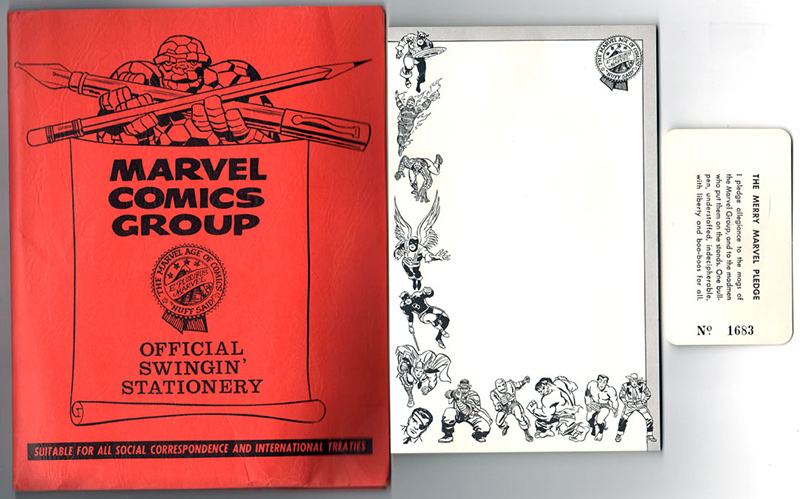MAGGIE’S WORLD BY MAGGIE THOMPSON
Maggie’s World 041: QLRM GSV XOFY!

In today’s comics world, there seems to be an ever-expanding population of websites, user groups, Facebook fan pages, and apps as part of the wider network of “social media.” Today’s wider network leads me to consider the comics clubs of days gone by.
There were some radio-comics crossover promotional clubs—most famously remembered by essayist Jean Shepherd in “The Counterfeit Secret Circle Member Gets the Message, or The Asp Strikes Again,” reprinted in 1966 in In God We Trust: All Others Pay Cash. “There it was! My simulated gold plastic Decoder pin. With knob. And my membership card.” According to Shepherd’s comedic exploration of Ralph Parker’s childhood, he had waited anxiously for his Little Orphan Annie code badge. He had yearned to decrypt the messages that were part of the Ovaltine-sponsored radio show (based on the Harold Gray strip that had begun in 1924, was introduced on radio in 1930, and went national on NBC in 1931).
Ovaltine’s manufacturer had realized the potential value of a club to encourage sales. (“I sat for a long moment in that steamy room, staring down at my Indian Chief notebook. A crummy commercial!”)
Despite Ralph’s dismay, comic book publishers, themselves, soon sought to establish their own networking in-groups. (This was at a time when such terms as “networking” and “in-groups” were not yet in vogue.)
Shazam! A Golden Age Club
Dell Comics eventually tried it, and I may still have my membership certificate and “group picture” of its (licensed) characters somewhere. How to join? You just subscribed to a Dell series. The 1950 ad in Henry #15 (Sep-Oct 1950), for example, noted that you’d get “free from Henry”: “A handsome full-color Membership Certificate with pictures and signatures of all DELL COMICS characters! Pocket-size Membership Card lifts out in a jiffy. You’ll be proud to show it off. Special invitation to join INNER CIRCLE is included. Saves you money on other fine DELL COMICS!” The certificate guaranteed that “write your name here” “is a member of the DELL COMICS CLUB in good standing and entitled to all privileges for one year from the date stamped on this card.” (At a guess, the “saves you money” consisted of other subscription offers.)

But that was a later manifestation. Nearly a decade earlier, Fawcett had pushed its Captain Marvel Club with energy, including a newsletter and information on more “swell premiums.” “Bargain X” brought America’s Greatest Comics #2, Gene Autry Comics #2, Minute Man Comics #3, and a color picture of Spy Smasher for a quarter. (“Bargain Y” of other Fawcett items cost 50 cents, and “Bargain Z” was a 12-issue subscription plus a copy of Gift Comics for $1.20.) “Some bargain, isn’t it?”

Building Brand Loyalty Among E.C. Fan Addicts
But one fan club program did drive completists to newsstands in the early 1950s. It didn’t hurt that Bill Gaines’ E.C. line featured memorable short-short stories with high impact drawn by a stable of distinctive artists. And it didn’t hurt that its titles were aimed at what are now called “Young Adult” readers. The year before the Comics Code began the process of sending the art form back to the nursery, E.C. began to build a mailing list of fans willing to pay to belong to its fan club to get news of upcoming issues.
E.C.’s series had already featured letters columns (albeit without writers’ full addresses and sometimes with amended content). The E.C. Fan Addict Club used high-quality material to reward its members’ enthusiasms. The membership pin resembled those of respectable fraternal organizations. I still have my original package, complete with the “Second Class Matter” mailing envelope with its 3-cent postage-metered label that included the message “GO MAD! Join the E.C. FAN-ADDICT CLUB.” Which was, face it, a done deal.
Marvelous Membership Rewards via the M.M.M.S.
By the time the Silver Age was shining brightly, actual in-person clubs had coalesced here and there around the country—thanks in part to DC and Marvel sharing the addresses of their letter-writers.
In Cleveland, Ohio, for example, a bunch of teens used to meet at the Cudell Center in the early 1970s, and Don and I eventually joined them. When I recently asked a guy who’d been the president of the Graphic Arts Society (enjoy the acronym) if he could recall who’d been a member, he cited (and I’m using alphabetical order here): Charlie Brodnick, Bruce Burke, Leroy Crayton, Gary Dumm, Terry Fairbanks, Mike Hudak, Bob Ingersoll, Peter Kuper, Joe Rutt, Ted Rypel, Seth Tobocman, and Richard Yarmy. Membership came and went, and friendships did the same. The Cleveland-area fans who occasionally hung out together (some of whom occasionally got to see movies from Dave Massaro’s collection) eventually included Dave Hogan, Wayne and Sherman Howard, Bill Thailing, and Pat Vaughn. And an impressive percentage of us went on to work in comics professionally.
Including “a guy who’d been the president.” That’s Black Lightning creator Tony Isabella.

Realizing the advantages of building a devoted fan following from such an audience, Marvel put together a fan kit. The membership card (“these privileges are non-transferable”) stated that the typed “authorized signature,” “Is a charter member in good standing of The Merry Marvel Marching Society And is thereby entitled to the adulation and admiration of all lesser mortals!” Whereas the Dell Comics Club certificate was authorized by G.T. Delacorte, Jr., the M.M.M.S. card was issued under the actual authority of Benj J. Grimm, Grand Marshal (pro tem). ’Nuff said!
Over the years, Marvel’s fan clubs and its premiums evolved, eventually culminating in a full-fledged kit for Wild Agents of Marvel before being discarded as a potential profit center.
And Now?
This year, I’ve begun to ask comics shop owners whether they have local clubs—as opposed to simply serving the rush of customers on New Comic Book Day. And some do. I have the feeling that more group activities are to be found in the stores that sponsor gaming events—given the attraction of in-person gaming. Nevertheless, some retailers provide a venue that’s more than a Magic: The Gathering meeting spot. Might there be companies (or, heck, creators) out there already offering a membership packet (perhaps with secret code) to unite their most rabid followers? Let’s keep an eye out for fan insignia.
In the meantime, did you keep your kit from the Captain Marvel Club? (It was a comics club promoted, by the way, by an actual feature film—Frank Tashlin’s Good Humor Man of 1950—and a spin-off Fawcett special issue.) If so, you can read the title this month. If not (Spoiler!), substitute “A” for “Z,” “B” for “Y,” and so on. But let’s keep that a secret among our comics club members, OK?
Maggie’s World by Maggie Thompson appears the first Tuesday of every month here on Toucan!